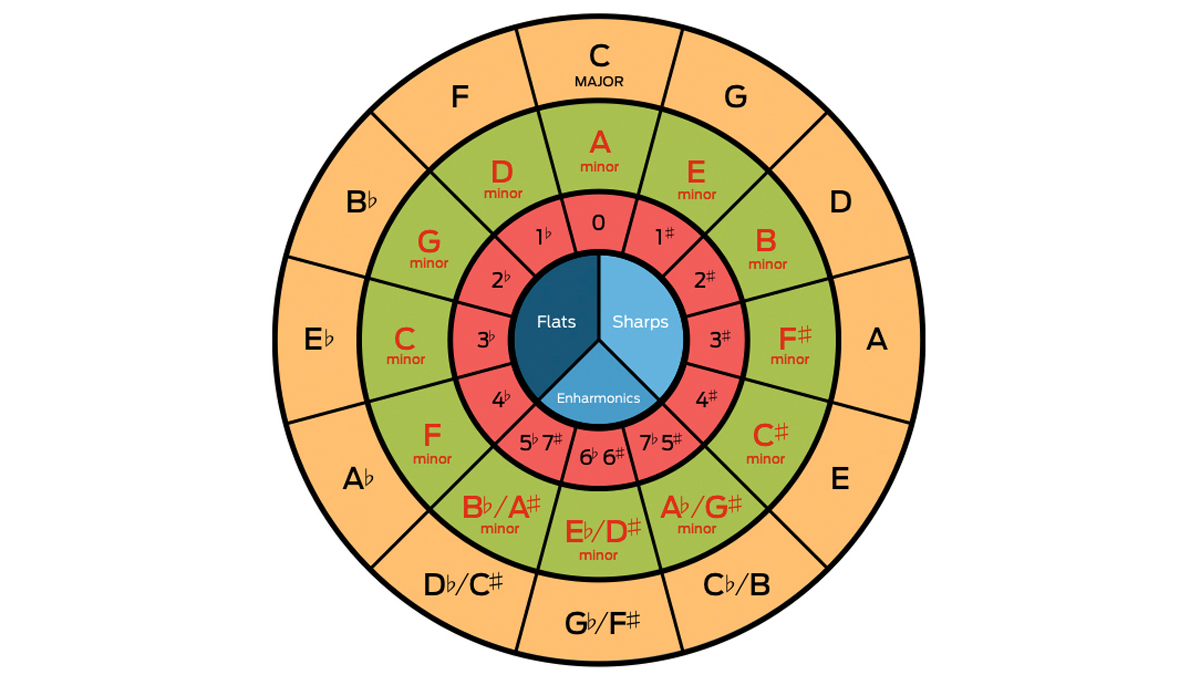What are modes in music, and how do they work?
Use this theory knowledge to unlock a new world of music making

A mode is a type of scale, and you probably already know at least two - the major scale is known as Ionian mode in mode-speak, while the natural minor scale is known as Aeolian mode. But what notes do we use to build them?
Essentially, the thing that determines one mode from another is the pattern of intervals between the notes.
An easy way to generate all seven major scale modes is to start with the scale of C major. Play this as you normally would, from C to C on the keyboard, and you get the Ionian mode. Start from any other note, however, and you’ll generate a different pattern of intervals with a different sound, and hence a different mode.
Playing the notes in the C major scale from D to D results in the Dorian mode, E to E gives you Phrygian mode, and so on, as illustrated in the chart below.

Broadly speaking, the modes can be split into two main categories – major modes and minor modes - depending on whether they contain a major or minor 3rd, and each mode has a particular type of chord that it can be used over the top of for best results.
More on modes
Lydian Dominant
Kind of a ‘bonus’ mode, Lydian Dominant is formed by merging together Lydian and Mixolydian modes to produce the equivalent of a major scale with a raised 4th and a flattened 7th.
Get the MusicRadar Newsletter
Want all the hottest music and gear news, reviews, deals, features and more, direct to your inbox? Sign up here.
Lydian Dominant is a great alternative to Mixolydian when used over dominant 7th chords, and can also be used over standard major triads as long as you avoid playing the major 7th over it!
Mode Mode
What differentiates a mode is what differentiates any other scale - the pattern of intervals between the notes. As with any scale, it doesn’t really matter if you can’t remember it... or even play it for that matter! Just Google the intervallic formula and either step program it into your DAWs piano roll editor or, if your DAW supports it, select the preset for the desired mode in the Scale Lock/Quantize feature. Even some arpeggiators, such as Logic Pro X’s, support modes.

What is the circle of fifths, and how can it help with your music theory?
Locrian - the odd mode out
The 7th mode, Locrian, is the only mode that can’t be played over a power chord made up of root and 5th, as it has a flattened 5th, which would create a discordant semitone clash. All other six modes contain a natural 5th, so the dark, tricky-to-use Locrian is a bit of a black sheep.
Order of brightness
Each mode has its own identity and tone, and they can be listed from happy to moody. If you want a mode to suit a particular mood or convey a certain emotion, use this order of brightness as your guide.

Computer Music magazine is the world’s best selling publication dedicated solely to making great music with your Mac or PC computer. Each issue it brings its lucky readers the best in cutting-edge tutorials, need-to-know, expert software reviews and even all the tools you actually need to make great music today, courtesy of our legendary CM Plugin Suite.
"If I wasn't recording albums every month, multiple albums, and I wasn't playing on everyone's songs, I wouldn't need any of this”: Travis Barker reveals his production tricks and gear in a new studio tour
“My management and agent have always tried to cover my back on the road”: Neil Young just axed premium gig tickets following advice from The Cure’s Robert Smith










